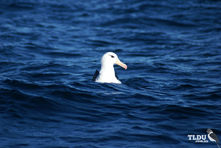
Shoppers Feedback:
Jan 17, 2017
Hello Ros,
I have now paid the invoice, but I would like to write to you just to say a big THANK YOU for getting me the Penguin!
The ChatterMate Penguin became a nice memory for me when I was in New Zealand, and I am so greatful to you for arranging so that I could have it! :-)
Thank you so much!!!!!!!!!!!
Regards,
Malin
Hi Ros,
Many thanks for your very kind email. I really appreciate your prompt reply!
I appreciate your advice regarding the decorations and customs. These are a gift for my daughter’s exchange student family so when she returns home on the weekend I will show her and see if she loves them as much as I do!
Thanks so very much again - I am truly grateful for your kind assistance.
Kind Regards
Bernadette
Ros,
Thanks again for the great customer service. It's a refreshing change!
Best regards,
Trevor
Hey Roz,
Thank you for your emails. Just loved my first order. The cute little Aussie bush critters are going to be used for an office Christmas decoration. My colleagues also liked them and talked about making an order to your site. I'll send you a photo when completed.
I'll be ordering more to send to my daughter's host family in America.
Fabulous service from you.
Kind regards,
Michelle
Thankyou. Order arrived today. One very happy grandson with his new beastly binoculars.
Regards,
Irene
- Home
- Wild Wonders
- Shop
- Aromas of Australia
- Australian Made
- Books
- Book Marks
- Christmas Decoration Sale
- Christmas Decorations
- Clocks
- Drink Holders
- Garden & Outdoor
- Gift Wrapping & Cards
- Home & Giftware
- Jewellery
- Keyrings
- New Products
- Pencils & Pen Holders
- Photo Frames
- Plush Toys
- Plush with Sound
- Sheepskin Rugs
- Stationery
- Stone Carvings
- Toys & Games
- Travel Goods
- Wedding
- Wild Figurines
- Wildlife Safety Products
- Wind Chimes
- Wine Charms
- View All Products
- Wildlife
- Australiana
- Explore
- Contact Us
Black Browed Albatross

Quick Facts
| Length: | 88 cm |
| Height: | - |
| Weight: | 3 500 grams |
| Colour: | Slaty black upper wings, back and tail. The body is mostly white |
| Habitat: | Live on the wing over the southern oceans for most of the year |
| Food: | squid, cuttlefish, plankton, crustaceans and fish |
| Predators: | - |
| Status: | Secure in WA, VIC, QLD - Vulnerable in NSW & SA - Endangered in TAS |
The Black-browed Albatross is the most common albatross seen in southern Australian waters for most of the year and is the only one of the mollymawks (another name for the smaller black-and-white albatrosses) with a yellow bill. The bill has a pink tip. The back, upper wings and tail are a slaty black. The underwing is white with broad black margins, especially the leading edge. The face is white, with a small black brow over a dark eye. The legs and feet are blue-grey to flesh-pink. This species is also called the Black-browed Mollymawk.
The Black-browed Albatross wanders throughout the oceans of the Southern Hemisphere, south of the sub-tropics. The Falkland Islands hold over 85% of the global population, making them the most important breeding location in the world for this species.
The Black-browed Albatross lives on the wing over the southern oceans for most of the year.
Black-browed Albatrosses migrate in winter and spring to as far north as Geraldton on the west coast and the Tropic of Capricorn on the east coast, but they are most commonly seen off the south-east coast of the mainland and around Tasmania.
Black-browed Albatrosses fly over the ocean surface, searching for plankton, squid, cuttlefish, crustaceans and fish and follow ships for galley refuse and carrion (dead food). They settle on the water near fishing boats in anticipation of food.
The Black-browed Albatross breeds colonially on many sub-Antarctic islands, including Heard and Macquarie Islands. It is a long-lived species (30 years or more), with a strong bond to its birth colony and birds will generally take the same breeding partner each season. The nest is a solid pile of mud and guano (droppings) mixed with some tussock grass and seaweed and is re-used each year. The nests are made on terraces on top of coastal tussocky cliffs and steep slopes up to 300m above sea level. Newly hatched chicks are covered with pale grey down and are fed by both parents. Young birds leave the nest between mid-March and early April.
Long-line fishing snares and drowns many Black-browed Albatrosses.
Black-browed Albatrosses approach close to shore and so can be seen clearly from land, especially from cliff-tops
Last Updated: Monday 15th July, 2013
BirdLife Australia - www.birdlife.org.au
BUSH e-TELEGRAPH
Signup for our monthly newsletter the "e-Telegraph"
Quick Links
Home | The Beginning | About The Land Down Under | Wild Wonders | Advertise on Wild Wonders | Christmas Decoration Sale | Christmas Tree Decorations | Drink Holders | Plush with Sound | Stone Carvings | Wildlife Wine Charms | Freebies | Australian Wildlife | Help Our Wildlife | Australiana | Photo of the Month | Explore The Land Down Under | Contact Us | Legal Notices

